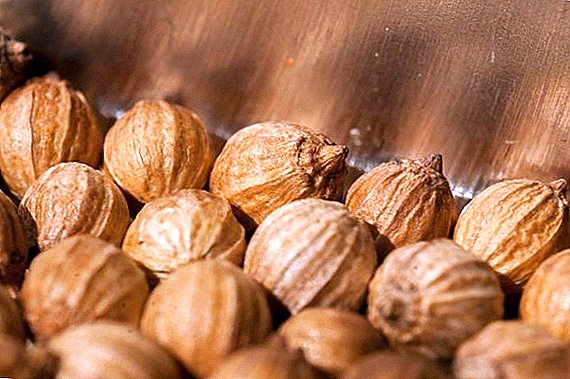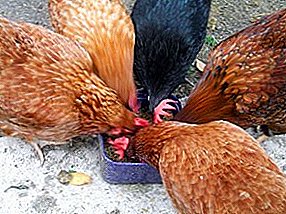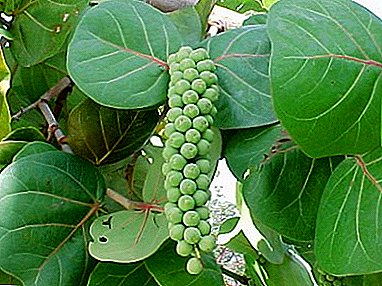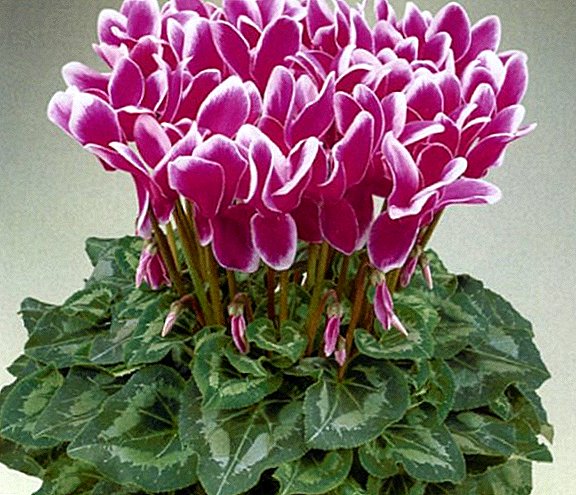 Cyclamen is a graceful tuberous perennial plant. The flower is relatively small in size, with an interesting pattern on the wide leaves and bright flowers. Unfortunately, cyclamen is susceptible to all sorts of diseases and attacks of pests, which include: bacteria, viruses, and other diseases of a nonparasitic nature, starting because of improper care of the flower.
Cyclamen is a graceful tuberous perennial plant. The flower is relatively small in size, with an interesting pattern on the wide leaves and bright flowers. Unfortunately, cyclamen is susceptible to all sorts of diseases and attacks of pests, which include: bacteria, viruses, and other diseases of a nonparasitic nature, starting because of improper care of the flower.
Did you know? If you properly care for cyclamen, the chances of catching an infection are almost nil.
The causes of diseases of cyclamen, which factors affect the health of the plant
 So what causes cyclamen diseases and what pests and diseases threaten the flower? Your cyclamen will most likely get sick if:
So what causes cyclamen diseases and what pests and diseases threaten the flower? Your cyclamen will most likely get sick if:
- in the room where the flower stands, the air is too dry;
- soil too wet in a pot;
- the room is very hot;
- soil mixture does not fit the flower;
- during the period of rest you fill it with water too much;
- catastrophically little light.
Important! Periodically inspect your flower, it will help to identify problems in the initial stages in a timely manner and ensure proper care.
These are the main, but not the only factors influencing the "well-being" of cyclamen. However, taking them into account, you will have far fewer problems with growing this type of plant.
Fusarium and its treatment
 Cyclamen diseases can be detected in the early stages and their treatment can save their lives. For example, if you notice that the flower begins to turn yellow from the top, then most likely it starts to develop fusarium. The cause of the disease is a fungus called - "Fusarium". It affects plant tissue and its vascular system. Because of this pest, the vessels of cyclamen become clogged, and as a result, the flower slowly fades. The fungus stays in the soil for a long time, entering the plant through the root system.
Cyclamen diseases can be detected in the early stages and their treatment can save their lives. For example, if you notice that the flower begins to turn yellow from the top, then most likely it starts to develop fusarium. The cause of the disease is a fungus called - "Fusarium". It affects plant tissue and its vascular system. Because of this pest, the vessels of cyclamen become clogged, and as a result, the flower slowly fades. The fungus stays in the soil for a long time, entering the plant through the root system.
To get rid of fusarium, you must:
- spray the plant with topsin-M;
- water with a base solution;
- be sure to isolate the flower, so that the disease is not transmitted to other plants.
Important!It is necessary to spray and water a flower about four times a month, with an interval of one week.
How to cure wet rot, what to do when roots rot
If you notice that the flower has flowers and leaves hanging down, a sharp and unpleasant smell has appeared, then you should know if your cyclamen has “Erwinia” or wet rot. The roots of the plants also gradually rot. It is easy to explain this phenomenon: because of cracks or wounds on vegetative organs or tubers, bacteria have got into the flower and gradually kill it. Also, the source of the infection may be another diseased plant or contaminated water. Unfortunately, effective methods of dealing with this scourge does not exist. Cyclamen should be destroyed immediately, so that other plants do not get sick.
Gray rot - the most dangerous disease
 Gray rot, or "Botrytis cinerea", occurs on cyclamen due to damp and cool air. In such a situation, these plants are too weak and gray mold, the fungus of which was brought from the water and wind, instantly affects the flower. Also, cyclamen can get sick with high humidity, high density of plants and as a result of cold content at night. In addition, the development of the disease provokes improper watering, for example, if water gets into the “growth point” of the bud and leaves. Symptoms of this disease are:
Gray rot, or "Botrytis cinerea", occurs on cyclamen due to damp and cool air. In such a situation, these plants are too weak and gray mold, the fungus of which was brought from the water and wind, instantly affects the flower. Also, cyclamen can get sick with high humidity, high density of plants and as a result of cold content at night. In addition, the development of the disease provokes improper watering, for example, if water gets into the “growth point” of the bud and leaves. Symptoms of this disease are:
- the appearance of gray mold on the stems and leaves (due to the strong fluctuations of air, it can fly up);
- diseased peduncles plants will darken and die off;
- the infected leaves of the flower turn yellow and die too.
Did you know? It is better to water the flower in the morning so that it dries out a little during the day.
Cyclamen anthracnose how to cure ailment
Cyclamen anthracnosis occurs because of the fungus of the genus - "Gloeosporium". The development of the disease is enhanced by warm and humid conditions. The fungus affects the growth of peduncles and leaves. For a certain time, the disease may not be felt, but when cyclamen releases flower stalks, the disease can be immediately identified. Peduncles affected by the fungus do not develop, become distorted, their upper part dries out. Due to a stop in the development of peduncles, flowering does not occur. Following the peduncles, the leaves are also infected. Old leaves, withering gradually die off, and young ones dry around the edges and begin to curl.
To get rid of anthracnosis you need to use steamed earth. If, nevertheless, the fungus was able to infect cyclamen, then try to maintain a low level of humidity, remove diseased leaves, peduncles and treat with fungicide 4 times.
Cyclamen pests, the main methods of struggle
 Cyclamen is a tender plant that needs careful care and attention to the manifestation of various pests and diseases. The main threat to cyclamens is:
Cyclamen is a tender plant that needs careful care and attention to the manifestation of various pests and diseases. The main threat to cyclamens is:
Aphid
Aphids on cyclamen are considered to be the most annoying pest. It affects the loss of the plant nutrient juice. In the case of a large accumulation of insects, cyclamen gradually loses its ideal geometrical proportions of flowers and leaves and deforms. Aphids come in a variety of colors: gray, green, orange, or even black. This parasite pretty quickly captures new territories and kills a flower in the truest sense of the word. If you find dandruff-like bloom on cyclamen leaves, be sure - your aphid started up on your flower.
To get rid of it, you must use an insecticide. Spray the plant after thoroughly washing it under a strong stream of water.
Did you know? The length of an adult aphid can reach 3 millimeters.
Thrips
Another type of disease called cyclamen is the invasion of thrips. The shape of the pest is similar to the spindle, and its approximate length is 2 millimeters. Trypsa can be replaced with the naked eye, the insect is mobile and fairly bright, which makes it very noticeable on the flower. The symptom of the appearance of thrips - the formation of silver drips, which remain after the movement of the pest. Due to mobility, thrips quickly affects the whole flower. Cyclamen is stained, stunts and deforms. If the threat is not eliminated in time, then the larvae may appear, which will lead to a massive fall of the leaves.
To get rid of thrips, you must use a special trap tape. After that, treat the flower with insecticide.
Cyclamen mite
 Mite on cyclamen is almost impossible to notice with the naked eye, because it is about 300 microns long. It has a yellow body and four pairs of paws. The mite strikes the inner surface of the leaf and it may seem to you that there is dust on the flower, but this turns out to be just a place where a large number of mites accumulate. The result of the appearance of pests is a change in the leaves at the edges. If they are allowed to spread, the stems will begin to twist and the buds will fall off. To eliminate a malicious tick, you must immediately remove the flowers, leaves and buds that were affected. Treat the flower with folk remedies or chemicals.
Mite on cyclamen is almost impossible to notice with the naked eye, because it is about 300 microns long. It has a yellow body and four pairs of paws. The mite strikes the inner surface of the leaf and it may seem to you that there is dust on the flower, but this turns out to be just a place where a large number of mites accumulate. The result of the appearance of pests is a change in the leaves at the edges. If they are allowed to spread, the stems will begin to twist and the buds will fall off. To eliminate a malicious tick, you must immediately remove the flowers, leaves and buds that were affected. Treat the flower with folk remedies or chemicals.
As you can see, different diseases of cyclamen can cause serious harm to the flower, and only their timely treatment will save the plant.












